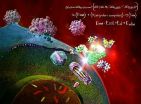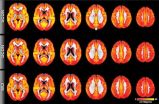Fundamentals of physics confirmed
Experiments testing Einstein's time dilation and quantum electrodynamics
2014-10-07
(Press-News.org) To explore any possible limits of the two theories, they have been experimentally verified many times already and both have passed all the tests so far. Hence, scientists look for deviations in experiments with increasing precision or under extreme conditions.
For this purpose, Nörtershäuser's team has now accelerated ions to velocities near the speed of light and illuminated them with a laser.
The results, which are presented in two new publications, confirm the time dilation predicted for high velocities in the theory of relativity with an accuracy that has never before been achieved. Furthermore, the team provided the first direct proof of a spectral line in highly charged bismuth ions, for which the GSI and other research institutions had been looking for in vain for almost 14 years.
Einstein confirmed again
In an experiment using the ESR heavy ion storage ring at GSI, the time dilation was measured at a velocity of about 34% of the speed of light. Einstein's prediction that the frequency of a clock depends on its speed is one of the strangest consequences of the theory of relativity. Since macroscopic clocks cannot be brought to sufficiently high velocities, the scientists used atomic clocks in the form of singly charged lithium ions. Einstein himself proposed the basic principle of the experiment. It was carried out for the first time in 1938 by Ives and Stilwell using hydrogen atoms; it was thus possible to prove time dilation with an accuracy of 1%. In modern experiments, these clocks are "read" using two laser beams. One of the beams is traveling in the same direction as the ions and is illuminating the ion from the "back", whereas the other one is counter propagating, illuminating the ion from the "front". Photodetectors are used to observe the florescence of the ions. Fluorescent light can be continuously emitted only when both lasers simultaneously excite the ions with the resonant frequency. When the signal is at a maximum, the frequencies of both lasers are measured. "According to the theory of relativity, the product of these frequencies divided by the product of the known resonance frequencies of the ions at rest must be precisely 1. Any deviation from this would mean that the formula for time dilation is incorrect" explains Nörtershäuser.
The result confirms Einstein's prediction to be accurate at a 2 ppb (parts per billion) level, which is about four times more accurate as in the previous experiment, which was carried out at the Heidelberg Test Storage Ring (TSR) at 6.4% of the speed of light.
The publication:
Test of Time Dilation Using Stored Li+ Ions as Clocks at Relativistic Speed. Phys. Rev. Lett. 113, 120405, 2014. DOI: http://dx.doi.org/10.1103/PhysRevLett.113.120405
A 14-year-old mystery has been solved
In a second experiment, the research group achieved a further breakthrough in a precision experiment. Here, quantum electrodynamics (QED) was tested in the strongest magnetic fields available in the laboratory. These fields exist on the surface of heavy atomic nuclei. They are about 100 million times higher than the strongest static magnetic fields that can be produced today using superconducting magnets. These fields become accessible in experiments with heavy, highly charged ions. The experiment used bismuth ions, which have only one electron or three of them left. While the resonance in bismuth ions with only one electron was already measured at GSI in 1994, it was impossible to observe the lithium-like bismuth until recently. But a meaningful test of QED results only from the combination of the two transitions.
These ions were accelerated in the ESR up to about 71% of speed of light and illuminated with laser light. Again, the fluorescence of the ions was detected to observe the resonance. "When we started with the preparations for the experiment, it quickly became apparent that detecting the fluorescence photons was one of the most critical points" explains Dr. Matthias Lochmann from the University of Mainz. "It is impossible to place detectors around the entire ring. Instead, we positioned a particularly efficient detection system at one point within the ring" says Dr. Raphael Jöhren, a member of Prof. Weinheimer's research team at the University of Münster, describing his contribution to the experiment. Using this detector, a new laser system and sophisticated data acquisition, it was possible for the first time to observe the long-sought transition. Therefore, they were able to eliminate the doubts about the theoretical prediction that had arisen in the meantime.
INFORMATION:
The publication
Observation of the hyperfine transition in lithium-like bismuth 209Bi80+: Towards a test of QED in strong magnetic fields. Phys. Rev. A 90, 030501(R), 2014. DOI: http://dx.doi.org/10.1103/PhysRevA.90.030501
Additional information
You can find a detailed description of both publications at http://www.tu-darmstadt.de/grundfeste_physik.
ELSE PRESS RELEASES FROM THIS DATE:
2014-10-07
Deerfield, Ill. (October 8, 2014) — The annual number of dengue fever cases in India is 282 times higher than officially reported, and the disease inflicts an economic burden on the country of at least US$1.11 billion each year in medical and other expenses, according to a new study published online today in the American Journal of Tropical Medicine & Hygiene.
The study, led by researchers at Brandeis University's Schneider Institute for Health Policy in Waltham, Massachusetts, the INCLEN Trust International in New Delhi, and the Indian Council of Medical Research's ...
2014-10-07
The battle against AIDS cannot be won in the laboratory alone. To fight the potentially deadly virus that 34 million people are suffering from we need help from computers. Now research fron University of Southern Denmark turns computers into powerful allies in the battle.
Effective treatment of HIV-virus is a race against time: Many of the drugs that have been potent killers of HIV-virus, have today lost their power, because the virus has become resistant to them. As a result science must constantly develop new drugs that can attack the virus in new ways.
Now researchers ...
2014-10-07
Scientists at The University of Texas Health Science Center at Houston (UTHealth), Monash University and RIKEN Centre for Developmental Biology have used a combination of small molecules to generate mouse cells that can form bone and cartilage. This new method is easily scalable, and hence is a promising approach for the repair of human bone and cartilage defects. The research has just been published at http://dev.biologists.org/ in the scientific journal Development.
Current strategies to regenerate bone and cartilage use adult stem cells that are committed to forming ...
2014-10-07
Boston, MA – The main function of the immune system is to protect against diseases and infections. For unknown reasons our immune system attacks healthy cells, tissues and organs in a process called autoimmunity, which can result in diseases such as multiple sclerosis, type 1 diabetes, lupus or rheumatoid arthritis. There are currently no existing cures for these diseases.
Now, in a new study by researchers at Brigham and Women's Hospital (BWH), a potential treatment maybe on the horizon. Researchers found that NAD+, a natural molecule found in living cells, plants ...
2014-10-07
Boston, MA — A new, large-scale study has identified six new genetic variants associated with habitual coffee drinking. The genome-wide meta-analysis, led by Harvard School of Public Health and Brigham and Women's Hospital researchers, helps explain why a given amount of coffee or caffeine has different effects on different people and provides a genetic basis for future research exploring the links between coffee and health.
"Coffee and caffeine have been linked to beneficial and adverse health effects. Our findings may allow us to identify subgroups of people most ...
2014-10-07
OAK BROOK, Ill. – A magnetic resonance imaging (MRI) technique can detect signs of cognitive decline in the brain even before symptoms appear, according to a new study published online in the journal Radiology. The technique has the potential to serve as a biomarker in very early diagnosis of preclinical dementia.
The World Health Organization estimates that dementia affects more than 35 million people worldwide, a number expected to more than double by 2030. Problems in the brain related to dementia, such as reduced blood flow, might be present for years but are ...
2014-10-07
A new model for stroke care is being studied in rural Alberta to reduce inequities in health across communities. This model, presented at the Canadian Stroke Congress, shows how hospitals in rural areas can mimic the type of care that's often only available in larger centres.
In geographically diverse Canada, stroke care can seem like tale of two cities – or more like a city and a small town. The ideal is stroke unit care, where a multidisciplinary staff of doctors, nurses and therapists collaborate on treatment and the road to recovery. In Alberta, that type of ...
2014-10-07
People who have had a stroke or transient ischemic attack (TIA or mini-stroke) are at high risk for a second similar event or other serious medical problems for at least five years and need better follow up and strategies to prevent these problems, according to data presented at the Canadian Stroke Congress.
At present, most stroke or TIA patients in Canada are followed closely by specialty clinics for about 90 days after an event, during the period they are considered at highest risk for a repeat event. If no such incident occurs during that period, they are often transferred ...
2014-10-07
WASHINGTON, DC – October 7, 2014 -- Yogurt containing probiotic bacteria successfully protected children and pregnant women against heavy metal exposure in a recent study. Working with funding from the Bill and Melinda Gates Foundation, Canadian and Tanzanian researchers created and distributed a special yogurt containing Lactobacillus rhamnosus bacteria and observed the outcomes against a control group. The work is published this week in mBio, the online open-access journal of the American Society for Microbiology.
A research team from the Canadian Centre for Human ...
2014-10-06
Targets to eliminate tuberculosis (TB) by 2050 are more likely to be met if new vaccines are developed for adults and adolescents instead of for infants, according to new research published in the journal Proceedings of the National Academy of Sciences.
Researchers at the London School of Hygiene & Tropical Medicine and the Stop TB Department at the World Health Organization found that a vaccine given to adolescents and adults in low- and middle-income countries could have a much larger impact on the burden of TB worldwide and is more likely to be cost-effective, even ...
LAST 30 PRESS RELEASES:
[Press-News.org] Fundamentals of physics confirmed
Experiments testing Einstein's time dilation and quantum electrodynamics

